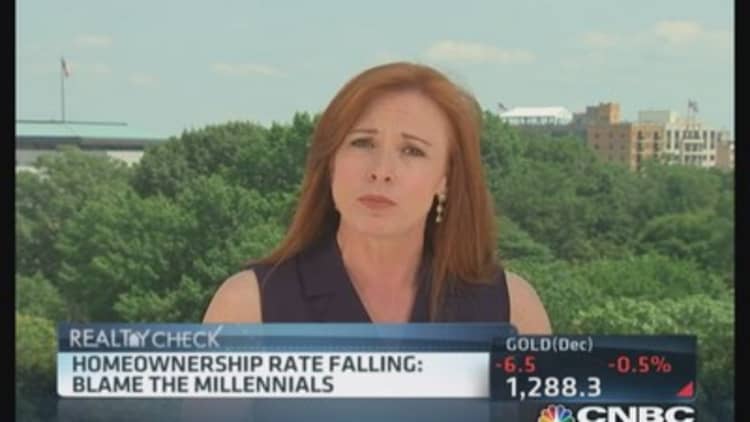The income gap between America's richest and poorest metropolitan regions has reached its widest on record, shaping an uneven housing recovery that threatens to hold back the broader revival of the world's largest economy.
The gap has narrowed and widened in past cycles, but the rebound from the most recent financial crisis has seen the ratio hit its most unequal since data collection began 45 years ago, fueling policy makers' concerns.
Read MoreBuying a new home? What a difference $1,000 makes
U.S. Commerce and Labor Department data for the 100 largest metropolitan areas by population, analyzed for the Financial Times by property website Trulia, found the income disparity between the 10th most expensive region and the 90th by home prices in 2013 hit its widest since records began in 1969.
The research shows Boston – ranked at 10 – reporting a per-capita income 1.61 times that of Cincinnati ranked at 90. At its low point in 1976, the gap was 1.36 times, between San Francisco and El Paso.
Read MoreRefinancing continues to drive meager mortgage volume
A patchy labor market recovery has meant significant variations in job and income growth between regions across the U.S., which in turn has intensified the divergences across the country's housing markets.
"Housing markets are playing out at very different speeds partly as a result of the lack of geographical breadth in the labor market. Certain sectors of the economy are performing better than others, propelling some housing markets over others," said Fannie Mae economist Mark Palim.

While some areas are experiencing bubble-like conditions, others are flailing. In Austin, Texas, a surge in technology jobs has driven demand. But in Akron, Ohio, which is struggling to boost employment through a new manufacturing base, house purchases have been more muted. In the government town of Sacramento, California, anxious homebuyers are waiting on the sidelines after being priced out by investors.
Stanley Fischer, deputy chairman at the Federal Reserve, highlighted the central bank's concern about housing in a speech this week. "The housing sector was at the epicentre of the U.S. financial crisis and recession and it continues to weigh on the recovery," he said.
Read More This a better bet than most stocks
In contrast to previous recoveries, he noted "residential construction [has been] held back by a large inventory of foreclosed and distressed properties and by tight credit conditions for construction loans and mortgages."
How cities fared through the boom and bust, and the extent of state and local government control over foreclosures, have dictated housing market performance.
But job and income growth are playing an outsized role, Mr Palim added, particularly as mortgage interest rate rises and home price increases affect affordability.
The number of Americans in work has surpassed the pre-recession peak. But there has been little lower and middle wage growth, constraining demand for houses across much of the country.
Read MoreUnderwater homeowners are turning into landlords
The rebound in construction, led by apartments, has been concentrated in pockets of the country where incomes are among the greatest. Six of Trulia's 10 highest-income areas – including San Jose, Boston and New York – also had the strongest residential construction performance by permits in 2013 compared with past norms.
Economists see construction activity as a better gauge of an improving housing market than prices, which have been skewed by an influx of investor buyers since 2012.
—By Anjli Raval, the Financial Times

